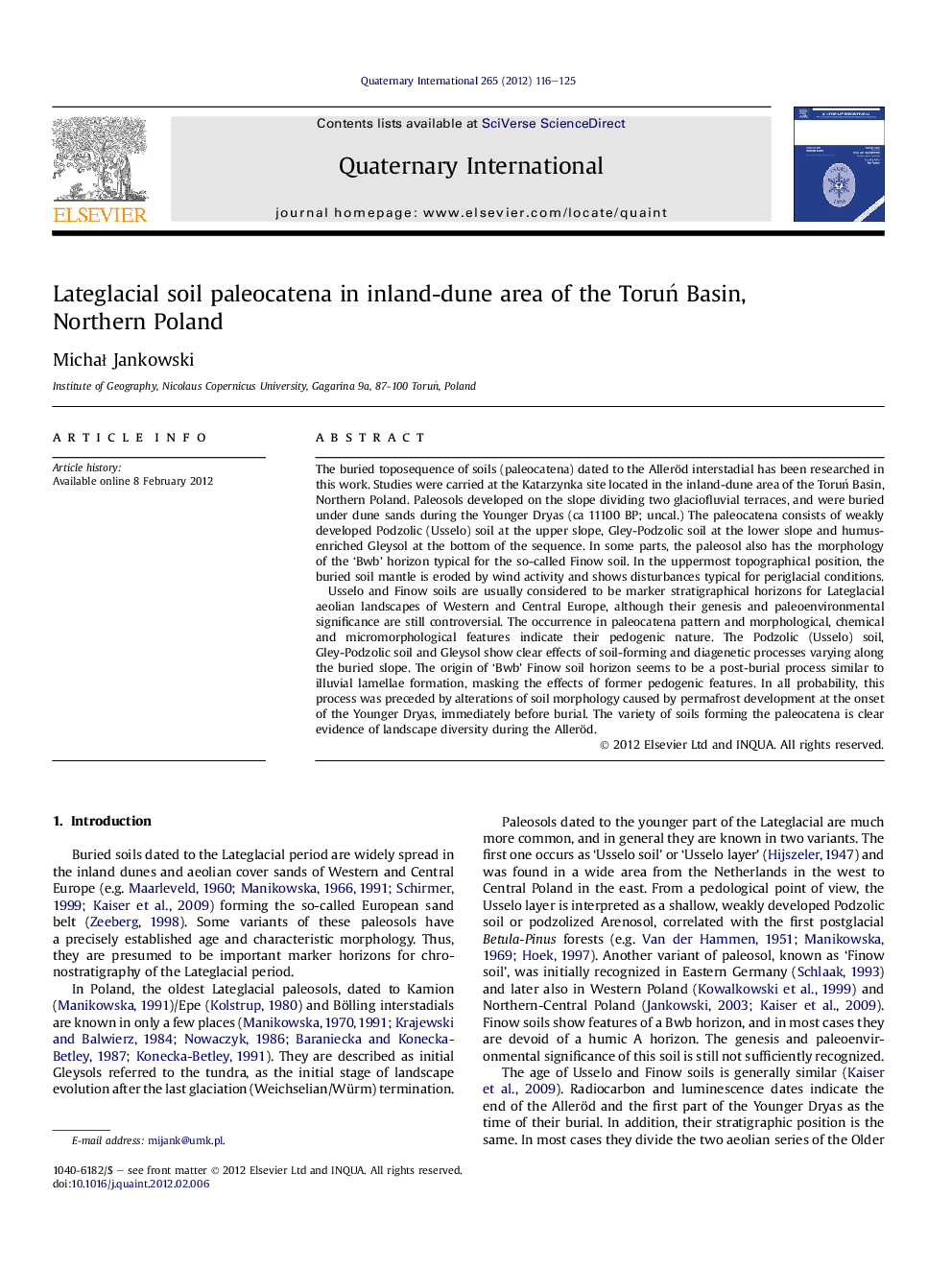| کد مقاله | کد نشریه | سال انتشار | مقاله انگلیسی | نسخه تمام متن |
|---|---|---|---|---|
| 1042846 | 1484220 | 2012 | 10 صفحه PDF | دانلود رایگان |

The buried toposequence of soils (paleocatena) dated to the Alleröd interstadial has been researched in this work. Studies were carried at the Katarzynka site located in the inland-dune area of the Toruń Basin, Northern Poland. Paleosols developed on the slope dividing two glaciofluvial terraces, and were buried under dune sands during the Younger Dryas (ca 11100 BP; uncal.) The paleocatena consists of weakly developed Podzolic (Usselo) soil at the upper slope, Gley-Podzolic soil at the lower slope and humus-enriched Gleysol at the bottom of the sequence. In some parts, the paleosol also has the morphology of the ‘Bwb’ horizon typical for the so-called Finow soil. In the uppermost topographical position, the buried soil mantle is eroded by wind activity and shows disturbances typical for periglacial conditions.Usselo and Finow soils are usually considered to be marker stratigraphical horizons for Lateglacial aeolian landscapes of Western and Central Europe, although their genesis and paleoenvironmental significance are still controversial. The occurrence in paleocatena pattern and morphological, chemical and micromorphological features indicate their pedogenic nature. The Podzolic (Usselo) soil, Gley-Podzolic soil and Gleysol show clear effects of soil-forming and diagenetic processes varying along the buried slope. The origin of ‘Bwb’ Finow soil horizon seems to be a post-burial process similar to illuvial lamellae formation, masking the effects of former pedogenic features. In all probability, this process was preceded by alterations of soil morphology caused by permafrost development at the onset of the Younger Dryas, immediately before burial. The variety of soils forming the paleocatena is clear evidence of landscape diversity during the Alleröd.
Journal: Quaternary International - Volume 265, 28 June 2012, Pages 116–125